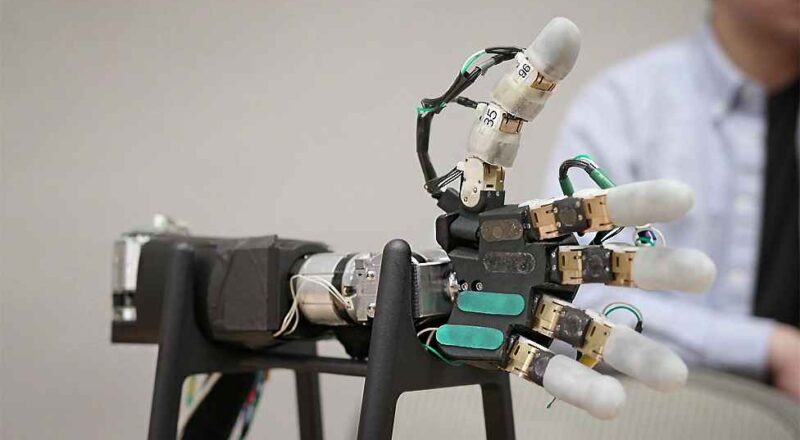The AI-powered bionic arm is revolutionizing prosthetic technology and marking a significant step forward for human-machine interaction. This cutting-edge prosthesis, which is controlled by the user’s thoughts and augmented by clever algorithms, reacts in real-time and provides movement that is smooth and natural like never before. By combining robotics, machine learning, and neurology, the arm not only improves functioning but also gives people previously unheard-of control, flexibility, and independence.
I’ve spent my whole life surrounded by prostheses of various sizes and forms since I was born without lower arms or legs.
I have never used a bionic hand before since I have spent the most of my adult life purposefully avoiding devices made for the upper arms.
However, I was fascinated enough to check one out after visiting a California business that is working to advance the technology, and the results were, to put it mildly, astounding.
Since their first creation using materials like wood, tin, and leather, prosthetic limbs have advanced significantly.
These days, replacement arms and legs are composed of carbon fiber and silicone, and more and more of them are bionic—that is, equipped with a number of electronically controlled moving elements to increase their use for the user.
The business I visited, Atom Limbs, is creating a next-generation bionic limb by fusing a number of cutting-edge technologies, such as artificial intelligence (AI).

Also Read : Thanks to ChatGPT and Shopify, my shopping habits will never be the same.
Human motion
Atom Limbs interprets electrical impulses from a person’s brain and utilizes them to move and manage a prosthetic limb using sophisticated sensors and machine learning, a process where computers learn to become more accurate.
In addition to offering the wearer haptic input on their grip strength, the arm’s elbow, wrist, and individual fingers all have the complete range of human mobility.
The arm is attached by means of a reinforced sportswear-style vest that uniformly distributes the arm’s weight. Compared to other bionic arms I’ve seen, it is significantly lighter even though it still has some weight.
Because it is non-invasive, neither surgery nor implants are required for it to work. It initially attaches to the wearer’s residual limb using bands of sensors that detect electrical impulses. After that, it attaches to the arm through an interface and a cup that fits over the top.
Even though I had never used an upper-arm prosthesis before, I was intrigued enough to accept Atom Limbs’ offer to try using their control software to operate a digital replica of the arm on a computer screen.
I was able to “assign” my arm’s remaining muscles to appropriate hand, wrist, and elbow movements, which was a novel and astounding feeling.
It’s nearly hard to explain the idea of learning to operate a bodily part I don’t have.

Out of reach
Though this technology is wonderful, one problem that handicapped people often worry about when new items are introduced is their cost.
There are several goods in the assistive devices market that, although outstanding, can cost many times the typical annual wage. As a result, many handicapped people—who, according to statistics, are more likely to be among the poorest members of society—cannot afford most equipment.
Although still a significant amount of money, Atom Limbs claims it expects to price its arm under $20,000 (£15,000), which is far cheaper than many other bionic goods available on the market.
Although this may seem like a lot, Ian Adam, a lecturer in prosthetics and orthotics at the University of Derby, believes it is a reasonable price in the business, but not everyone will find it appealing.
It’s at the cheaper end of the market, but say you had an accident and got a pay-out, well that’s got to last the rest of your life, he stated.
Therefore, I believe that many patients are wise about their spending. In other cases, individuals are willing to forego using upper limb prostheses altogether, since they may be considered an extravagance that not everyone will find necessary.
Also Read : “Elevated sound” and “enduring design” are the claims of Bang & Olufsen’s ultra-slim Bluetooth speaker.

[…] Also Read : The AI-powered mind-bending bionic arm […]
[…] Also Read : The AI-powered mind-bending bionic arm […]